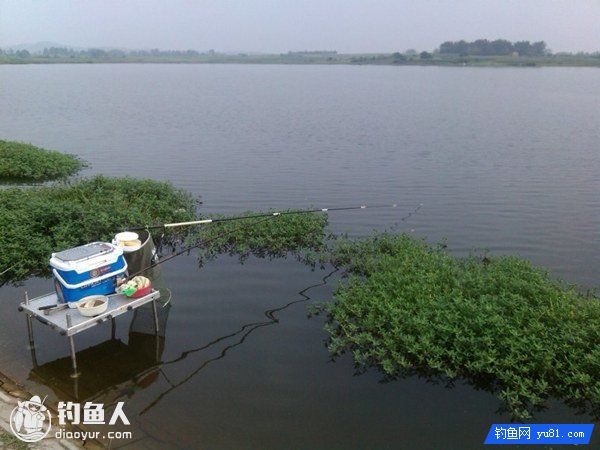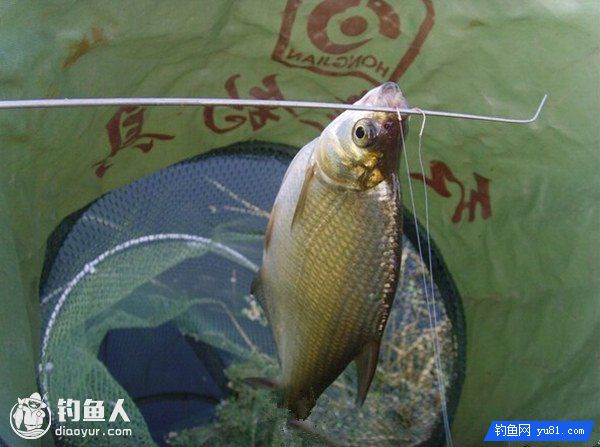Wap Welcome to visit Love Fishing
Relatively speaking, there are not as many fish species that can be caught in spring as in summer and autumn. Even so, some fish have higher hooking rates in spring than in other seasons. As we all know, the fish that can be caught in freshwater in spring include common freshwater fish such as crucian carp, carp, grass, bream, carp, mandarin, etc. Among them, crucian carp, bream, and carp have the highest rate of hook eating. Here we focus on fishing bream in spring.
Bream is a herbivorous fish, but the bait is not as strong as grass carp. It mainly uses microtubule plants such as calamputa, bitter grass, leaf algae, and ophthalmia as the main food. It also likes to eat land grass plants and vegetable leaves, and also likes to eat small plankton organisms and plant fragments at the bottom of rivers and lakes. Although they eat slowly, they eat a lot, eat a lot, and last for a long time, which is beyond the reach of other fish, so they are very suitable for fishing.
1. Understand the fishing spots
The first step in fishing is to carefully analyze the characteristics of the river and analyze where the fish may hide. This is an important part of fishing and is essential.

1) Where the two rivers meet
In daily life, we will find two intersecting rivers, one of which has clearer water and the other has turbidity; one of which has a faster water flow, and the other has a slower water flow. At these intersections, the river water is often turbid on the side where the water flows faster, and the river water flows more slowly on the side where the water flows more slowly. At this time, fishermen can choose to fish on the side where the water flows more slowly at the intersection of the two rivers. It is certain that this is a rare and good fishing spot. If the water depth and flow rate are suitable and the mainstream is avoided, if there is still a return, it will be a walk, but it is indeed a safe place for fish to survive and a good fishing spot we are looking for. Sometimes the rivers are uneven, there are big pits, and the water is deep. It may be that big fish hide here. If the fishermen find these hidden places, it may be the prerequisite for us to achieve a good harvest. Therefore, fishing for obstacles and fishing pits is also the first choice for fishermen.
In fact, fishermen are really a science when choosing points, and they cannot be exchanged without years of accumulation of fishing experience. As long as we follow these unique underwater treasures such as "Wide fishing narrow, narrow fishing wide, fast fishing slow, slow fishing fast, fishing bays, grass, fishing convections, fishing dams, fishing obstacles, fishing pits, fishing piers, fishing convex...", we can find the hiding place of the fish and obtain the harvest of fishing.
Breams are clustered fish and like to gather in groups. This is their living habit. There are hundreds, thousands of people in a group, and dozens of people at least. They are happy to swim in the wide body of water. These places have good oxygen capacity and oxygen maintains their life. Therefore, when choosing fishing spots, you should consider choosing open water surfaces, especially in wild rivers and wild lakes. The terrain here is varied, undercurrents are easy to form, and food accumulation is easy to accumulate, which is a place where breams like to come often; only when the fish have sufficient oxygen to maintain their lives can they have sufficient physical strength to swim and have full appetite.
2. Applicable principles to choose fishing tools
1) Fishing rod
Usually, light hand rods with a length of 4.5-6 meters are used to specifically catch breams at the bottom of the shore of a large reservoir (with a nylon line slightly longer than the rod with a diameter of 0.30-0.35 mm). You can also use a medium-toned sea rod with a length of 2.7-3.6 meters to catch breams in general rivers and lakes. Because the individual breams are not very large, this type of fishing rod can already withstand whether it is based on their weight or struggle.
2) Fishing line
Usually, nylon lines of 0.3-0.35 mm are used (the length of the fishing line and the fishing rod are equal or slightly longer than the fishing rod). If they are too thick, the signal will be lost. When the fish rope bait is sucked, it is easy to miss the best time to lift the rod.
3) Fishing hook
Medium hooks are generally used. Because the fish has a small mouth and the large hook is not easy to inhale into the mouth and is difficult to catch, it can only be used for medium hooks. If a first-line double hook is used, the hook rate of bream will be greatly improved. The method is to tie a hook 20 cm away from the bottom hook (a long handle is suitable). The hook should be tied to the main line of nylon, without the lead wire, which can increase sensitivity.
If you are only for fishing for breams, you can choose a top hook with a fuse instead of a lead sinker, and the lighter you can reach the hook, the better, so that the hook can slowly sink to the bottom of the water. Since both hooks are facing the sky, when the bream bites the hook, just a lightly send or drag the float, you have to lift the rod and you will definitely get a harvest. Fishermen also discovered a strange phenomenon: Most of the breams caught by biting a hook on it.
After analysis, since bream is a middle- and upper-class fish, visually speaking, it is easy to find the hook above. Furthermore, the hooks on them are not easily entangled by weeds, which increases the chance of fishing. When fishermen use double hooks on one line, they can also use one meat and one vegetable method. Usually, the bottom hook is hung with fragrant pasta bait, which is easy to catch large fish, and the hook is hung with red earthworms. The decoupling rate of fishing bream is also very small, which can reduce the interference of small fish.

4) Float and fishing fall
When fishing for breams, a vertical float is usually used (the buoyancy of the fish float is greater than the sinking force of the fall, so that the bait hook can freely hang in the water). When fishing for drops, use small drops. Choose hand rod drops that should be light rather than heavy, and small rather than large. If the lead sinker is too large or too heavy, it will not only easily scare away the fish, but the float will also sink into the water and the lead sinker will lie at the bottom, affecting the sensitivity of the float. Of course, it should not be too light. If the bait hook is too light, it is difficult to fall to the bottom and cannot catch the bottom fish. When we catch bream, we can decide based on the actual situation. Generally, we use small drops weighing 1-2 grams (light drops), which are highly sensitive.
5) Fishing bait
Bream is an omnivorous fish, which eats both aquatic plants and algae, as well as insects and aquatic animals. Therefore, when fishing, you can use vegetarian bait or meat bait. Vegetarian bait can be made of commercial bait or homemade dough bait. Rice, millet, corn, etc. are all good river fishing nest baits, which are resistant to soaking and can withstand the rinsing of running water.
When making bait, you can choose to use high-quality white wine to add appropriate amount of cloves, cumin, vanilla, cinnamon, etc. After soaking these medicinal wines in the granular bait, they can emit a tempting fragrance for a long time, thus producing a good fishing effect. Meat baits include earthworms, red worms, shrimps, maggots, etc. Most of the breams are free-range fish and like to live in groups. All year round, as long as you can catch a bream in the fishing spot, you can catch multiple ones one after another. According to the characteristics of the bream cluster activity, bait can be used to make heavy nests to fish. Because the bream has a small mouth, when using dough bait as a fishing hook, the dough bait must be small, just as the size of a soybean, so that it is easier for bream to swallow.
Because breams like to grab food in groups and are particularly fond of eating wine lees, fishing breams by spreading large nests and a double hook in front of the line can often achieve excellent results.
3. Use fishing skills in combination with the actual situation
The peak season for fishing for bream is around Qingming Festival. When fishing, you should master the following points:
1) Buy a bait
The difference between making nests in river fishing is that running water can easily wash away the fragrance in the nest. So when making a nest, you might as well take a smaller amount and more times. You can also choose to make 2-3 nests at a time, about 10-20 meters apart. If you find fish, you can fish for which nests you don’t have fish. If you don’t get too fish, you can give up. This way you can find an ideal fishing spot and increase the amount of fishing. On rivers with faster water flow, you can use the “hard nest” method to fish, such as corn cobs, larger pieces of bran cakes, peanut cakes, bean cakes, etc., which can be connected to a small rope to fix it on the tree pole or stone on the shore, and can be used again when you need to change positions. Sometimes, when making a nest, you can also make a nest upstream 20-30 meters away from the fishing spot, so that the flowing water can be used to fish (similar to string hooks, but there are more hooks, and the fishing line can flow along the water dozens or hundreds of meters away from the angler). When throwing hook bait upstream, the water flow will bring the hook bait to the middle and downstream of the river, and the fish will take the opportunity to grab food against the current, without any effort, and you will be caught in the fishing moment.
3) Quickly throw hook (bait) to lure fishing
The bream is fast and agile, and likes to grab food that "falls from the sky", such as the characteristics of food falling from trees on the shore and the butterflies, flies, dragonflies and other foods flying down. If the fisherman makes it surprisingly difficult to throw the hook bait vertically and quickly underground, the fish will often suddenly jump up (equivalent to the "water-shooting fish" in the inland rivers of Southeast Asian countries) and will rush to grab it, and they will be able to get on the hook in one go. Fishermen have mastered their bait-taking characteristics, and it is more convenient to fish and pick them up.
About us| Privacy Policy| Contact Us
Copyright © 2023-2030 Copyright@Love Fishing XML map